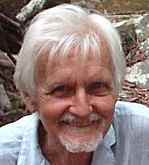And so to Latvia. A most interesting country with, as with the rest of Europe, a very chequered history, of wars, and threats of wars, occupations by foreign countries, along with a determined resilience maintain its national identity.
Read more: Latvia: Maps, History, Geography, Government, Culture, Facts, Guide & Travel/Holidays/Citieshttp://www.infoplease.com/country/latvia.html#ixzz3Yxhskb4j
One of the first places I visited was a supermarket in a large shopping complex in search of food, and it was indeed a pleasure to be greeted by a local folk group playing their ethnic music.
The weather, to say the least was cold. Daytime temperatures were around five degrees, and when considering the chill factor of the wind would have been close to zero. The overnight temperatures were, of course much lower. These glass roofed buildings were to be found in the centre of Riga on the edge of one of the very large parks. They provided shelter from the wind, and warmth from the sun. At the same time they were the entrances to an underground car-park.
The old-world architecture was a delight to see with its heart and soul in contra-distinction to the modern architecture so prevalent in Australia.
So many of the buildings had these arched entrances to the inner courtyards which housed even more elaborately designed buildings.
To see the un-pollting vehicles on the streets still, such as these trolley buses, was indeed a joy. Of course though they also had the heavily polluting diesel buses too.
And the trams, This is one of the older varieties.
Then we have the new ones, which are much more stream-lined.
This is my hosts house in the countryside which is unique in that the insulation used is sand. The outer walls are concrete bricks with the sand sandwiched between the inner walls of timber. Naturally enough it still requires to be heated.
The house is built on the edge of this small lake with the sauna where, after having taken the sauna, you then jump into the freezing waters of the lake. In the winter time it is traditional to make a hole in the ice for doing so.
I have tried tho turn this photo and am sorry to say that I am unable to do so. This is an old windmill next to my host house.
This may well have you guessing, for it did me when I first saw it. It is, of all things, a drying cabinet for the hanging of your wet weather gear
In the city of Riga are still to be found quite a number of wooden buildings, as well as many streets still paved with cobblestones.
| Facts & Figures | |
|---|---|
President: Andris Berzins (2011)
Prime Minister: Laimdota Straujuma (2014)
Land area: 24,903 sq mi (64,500 sq km); total area: 24,938 sq mi (64,589 sq km)
Population (2014 est.): 2,165,165 (growth rate: –0.62%); birth rate: 9.79/1000; infant mortality rate: 7.91/1000; life expectancy: 73.44
Capital and largest city (2011 est.):Riga, 701,000
Monetary unit: EURO
National name: Latvijas Republika
Languages: Latvian (official) 56.3%, Russian 33.8%, other 0.6% (includes Polish, UKRAINIAN
Ethnicity/race: Latvian 61.1%, Russian 26.2%, Belarusian 3.5%, Ukrainian 2.3%, Polish 2.2%, Lithuanian 1.3%, other 3.4% (2013)
Religions: Lutheran 19.6%, Orthodox 15.3%, other Christian 1%, other 0.4%, unspecified 63.7% (2006)
National Holiday: Independence Day, November 18
Literacy: 99.8% (2011 est.)
Economic summary: GDP/PPP(2013 est.): $38.87 billion; per capita $19,100. Real growth rate: 4%.Inflation: 0.2%. UNEMPLOYMENT
Communications: Telephones: main lines in use: 501,000 (2012); mobile cellular: 2.31 million (2012). Broadcast media: several national and regional commercial TV stations are foreign-owned, 2 national TV stations are publicly-owned; system supplemented by privately-owned regional and local TV stations; cable and satellite multi-channel TV services with domestic and foreign broadcasts available; publicly-owned broadcaster operates 4 radio networks with dozens of stations throughout the country; dozens of private broadcasters also operate radio stations (2007). Internet Service Providers (ISPs): 359,604 (2012). Internet users: 1.504 million (2009).
Transportation: Railways: total: 2,239 km (2008). Highways: total: 72,440 km; paved: 14,707 km; unpaved: 57,733 km (2010). Waterways: 300 km perennially navigable. Ports and harbors: Riga, Ventspils. Airports: 42 (2032).
International disputes: Russia demands better Latvian treatment of ethnic Russians in Latvia; boundary demarcated with Latvia and Lithuania; the Latvian parliament has not ratified its 1998 maritime boundary treaty with Lithuania, primarily due to concerns over oil exploration rights; as a member state that forms part of the EU's external border, Latvia has implemented the strict Schengen border rules with Russia.
|
Read more: Latvia: Maps, History, Geography, Government, Culture, Facts, Guide & Travel/Holidays/Citieshttp://www.infoplease.com/country/latvia.html#ixzz3Yxhskb4j













No comments:
Post a Comment